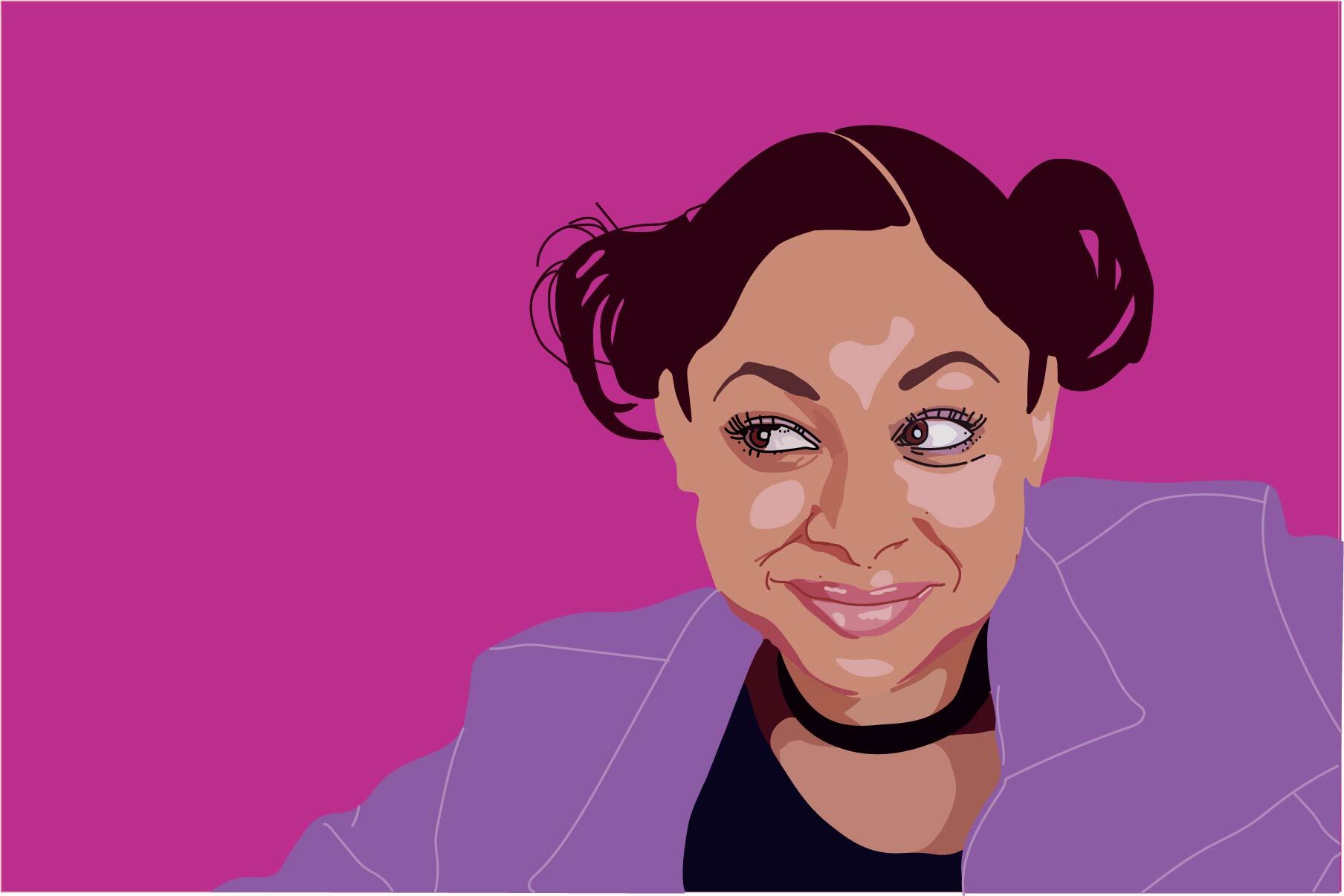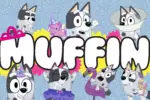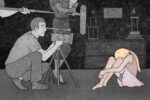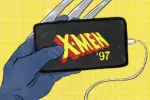Long before 2020, Disney Channel’s “That’s So Raven” understood the importance of addressing racism in children’s television programming. The sitcom knew how to discuss racism in a way that was easy for children and young teenagers to understand but also did not downplay the seriousness of the issue.
“That’s So Raven” ran from 2003-2007 and starred Raven Symoné as Raven Baxter, a teenager with psychic powers. The show starred a Black teenage girl and centered on a Black family — a rare occurrence in Disney’s early 2000s content. This type of diversity in representation was long overdue for Disney and other children’s television networks. Nonetheless, Disney Channel took the responsibility that accompanies portraying Black characters on TV seriously long before current conversations on racial justice came to the fore. Critically, “That’s So Raven” took on the task of directly covering the topic of racism rather than shying away from it.
Responsibility to Address Race
Especially in this time of increased dialogue surrounding racial injustice in the United States, children’s television programming has a responsibility to appropriately address racism and its consequences. There is a tendency for children’s television to promote narratives of colorblindness. While a children’s show may contain characters of all different races, rarely do these shows do the work of actually addressing topics involving racism.
Consequently, children are presented with idealistic worlds in which everyone is equal and race is never discussed. This method of storytelling, while potentially well-intentioned, actually does more harm than good because children are not colorblind. According to research examined by Dr. Erin N. Winkler, babies as young as six months old have the ability to perceive differences in race, and children as young as three can demonstrate racial biases.
A colorblind approach to children’s television is irresponsible precisely because children have perceived differences in race for most of their lives. It also fails to teach kids about the hardships that people of color face daily.
Children’s media needs to take advantage of the opportunity it has to educate kids on what racism looks like and why it is wrong. “That’s So Raven” provides a model for how a television show can begin to address racism appropriately and effectively for a young audience.
“True Colors”: Discussing Racism Head On
The “True Colors” episode is an example of how “That’s So Raven” powerfully approached racism in a straightforward manner. The episode’s main storyline follows Raven and her friend, Chelsea, as they apply to work at a clothing store.
Raven is clearly the perfect applicant for the job — she can fold clothes neatly, knows how to style people and even has experience designing her own clothes. Chelsea, on the other hand, is a terrible applicant and can barely fold a single sweater.
Despite all of Raven’s qualifications and Chelsea’s clear lack thereof, Chelsea gets the job and Raven does not. Feeling confused and frustrated, Raven suddenly has a vision where the store manager says, “The truth is, I don’t hire Black people.”
The rest of the episode involves Raven and her friends constructing an elaborate plan to catch the manager saying these words. With the help of a local news reporter, Raven, Chelsea and Eddie are able to record the manager saying the exact racist words Raven saw her say in her vision. In the end, the manager gets exposed on the news and is fired, proving to Raven and her friends that they have the power to stand up for what’s right in the face of racial injustice.
The brilliance of this episode lies in its direct approach to racism. Characters consistently use clear language to discuss the racist incident Raven experienced.
For example, Eddie comments on how refusing to hire someone because they are Black is discrimination, Chelsea says she can’t believe that people still hold such prejudice, and they all discuss how they have only seen white people working in the store. In one of the most powerful lines of the episode, Raven says, “I always knew about racism, but I never knew how much it could hurt,” underscoring how racism harms those who fall victim to it.
This clear language makes it easy for kids to understand a specific instance of what racism can involve and why it is both unjust and destructive. The show does not dance around the subject or use some sort of metaphor to symbolize anti-Black racism as children’s media often does.
For example, Kristen Bell’s recent children’s book has been criticized for using “purple people” to promote a narrative of colorblindness. Bell has stated that she did not intend for her book to be about race at all, but many people believe it teeters on the edge of having “purple people” be a substitute for Black people given the history of the term “purple people.”
“That’s So Raven” avoids any sort of ambiguity or confusion regarding its discussion of race. The store manager did not refuse to hire Raven because she had a certain color hair or shirt, as a metaphorical storyline could have involved. Rather, she doesn’t hire Raven because, as she literally states, Raven is Black. Metaphors run the risk of making children miss the point entirely. Given that children understand racial differences and can hold racial biases, there is no reason to soften truths about racism through symbolism.
Additionally, this episode cleverly shuts down the bootstrap mentality myth in a way that is digestible for young children. Despite all of Raven’s qualifications, she doesn’t get the job while her obviously unqualified white friend does. This aspect of the storyline teaches kids about how racism is a systemic barrier, so that no matter how hard a Black person works or how talented they are, people still discriminate against them. After watching this episode, a child might think twice the next time they come across a lesson that teaches them that hard work always equals success.
The subplot of the “True Colors” episode complements the main storyline well by displaying a celebration of Black Americans’ accomplishments. Raven’s brother, Cory, is reluctant to complete a school report for Black History Month because he finds it boring. Cory has a dream where he is visited by a variety of accomplished Black historical figures, such as Frederick Douglass and Jackie Robinson.
Through these encounters, he learns about how so many inspiring Black people have shaped the life he lives today and why it is important to take his report seriously. This subplot bolsters the more intense storyline about racism by teaching children about celebrating all that Black Americans have accomplished.
“That’s So Not Raven”: Standing Up for Yourself In The Face Of Injustice
The episode “That’s So Not Raven” contains a more subtle but equally as powerful storyline involving race and body image. In this episode, Raven becomes a finalist in a teen magazine fashion design contest. The magazine publishes a picture of her in her dress, but her body has been photoshopped to be thinner. Raven brings this issue to the attention of the editor in chief, who tells her that she is a great designer but doesn’t have “the look.” As she says this, she points to a picture of a rail thin, white model. This model will be the one to wear the dress in the fashion show, not Raven.
After being encouraged by another Black woman who works at the magazine, Raven decides to model her own dress anyway. She shows up on the runway alongside the white model and refuses to leave. During a compelling monologue directed at the editor in chief in front of everyone at the fashion show, Raven says, “In case you haven’t noticed, people come in all shapes and sizes and they’re all beautiful. Put that in your magazine.”
This episode tackles the serious issue surrounding Black women and body shaming. Author Mikki Kendall writes, “With the deluge of imagery that associates beauty with whiteness, girls of color are primed not only to develop eating disorders, but also to see these disorders go untreated.” The fashion industry in particular promotes the idea that thin and white equals beautiful, just as the editor in chief of the magazine in this episode does.
Raven proudly walks the runway despite not fitting that stereotype. She stands up for herself and everyone who looks like her, teaching children watching that they are beautiful no matter what society says.
Children’s television today should address racism as intelligently as “That’s So Raven” did. Discussing racism directly is the only way to teach children the importance of fighting against it.

















